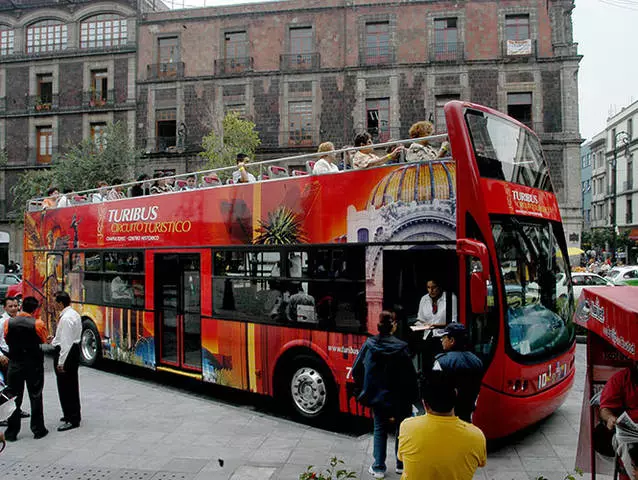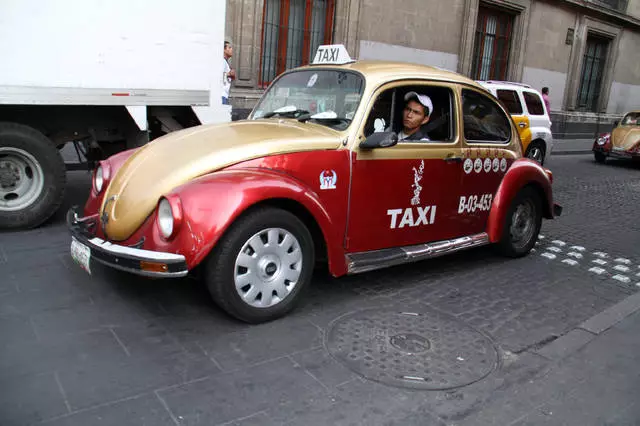The metro actually in Mexico City is considered one of the largest in the world: 11 lines and 175 stations that are connected to one entire city to one entire city. And it continues to expand: at the end of 2012, another line opened, another 20 stations were added, and this is also not the end. In 2013, set for the construction of several other stations on the new branch. Names at the metro lines are not, but there is only a number and color. To figure out, in what direction you move, you need to know the name of the end station. For example, you are traveling to the Moscow Station "University" in the direction of "1 south-western" or to the station "Airport" in the direction "4 River Station". No endless lists of stations of the specified direction on the platform. Stations are indicated by pictograms. The fact is that Metro Mexico City was built in the 60s of the last century. At that time, many people in the country were not particularly friendly with the alphabet, simply speaking, they could not read. And for the convenience of illiterate people, all metro stations were equipped with pictograms, and the names of the name were inscribed only in diagrams and maps. Therefore, coming to the station, you will not see her name anywhere, but only a pictogram on the wall. In addition to everything, in the metropolitan Mexican metro does not declare stops, only two beeps before closing the doors, which, you agree, creates additional difficulties: not only you know where you go at a particular point, it is also necessary to focus on pictographic letters. And when the merchants are broken over the ear on all the voices of the endless flow traders, industrially in trains, then with unaccustoms you are lost even more. Each station has a large scheme of the entire metro to figure out where you go and where to make transplants. Underground transport in Mexico City begins work at 5 am (on weekends in 6) and finishes at midnight. Ticket price 3 pesos.

The original transport appeared to my breath in Mexico City - Metrobus (emphasis on the last syllable). The aborigines often call such buses with Mexibus. It looks like this is a regular urban bus of red, but with a pretty high platform for the entrance and access of passengers. It is not difficult to guess that its stops are located on the overestimated areas of the type of entrance to the subway. As I understood, Mexican metrobuses are a certain alternative to the subway and move along their own routes. It is believed that this modern high-speed transport can become a real solution to the problems of the road in the city. Metrobules are moving along the highlighted band, therefore they do not concern hopeless city traffic jams. The question with the "dedication" here is solved here, unlike Moscow: the fence / sidebork along the strip is quite high and the lumens for the congress / check-in are only in certain places. Thus, if someone takes place to take advantage of the "dedication", then it can be said, it is doomed, because it will not be able to wash it up in the case of a "unexpected" meeting with such a strip. Their route is carried out along the Avenida Insurgents (rebel prospectus) - a boulevard about 70 km long, which is considered the longest boulevard of the world. This type of transport is a little more expensive than the subway, and its cost is 5 pesos.

In the capital of Mexico, we saw TURIBUS - of course, special transport for a tourist review of the city. Two-story pedestrian bass with an open top platform and a closed, air-conditioned lower floor, following specially trained tourist routes (about 10 offered, including those departed and in the neighborhood of the city). In the tourism you will be given headphones with a list of languages (I'm not sure about Russian), you can enter and leave you can at any time. We had neither time nor the desire to test such a way to get acquainted with the city, but the reviews of those who still decided, lead to despondency: the sound quality in the headphones leaves much to be desired; The story of the city is boring and tedious, besides not live, but recorded in the finished form for quite a long time; The duration of the trip is 3-4 hours, which is incredibly tired; Tourist movement interval is about an hour. In the case of force majeure (rallies, pickets, demonstrations, etc.), tourist can deviate from the route that if you have English, but the absence of Spanish will create very obvious inconvenience, because in this case the accompanying guide will begin to make an explanation and give comments live and, that is natural, in your native language. In any case, the choice is yours, for with a serious time limit, tour buses are still the only way to get acquainted with Mexico City. But this type of transport is very expensive, the price of which depends on the route. Of course, the price for the trip, for example, the Totiooacan will greatly exceed the cost of the trip in the city center. Somewhere $ 10-40 per adult and times 1.5-2 less than a child.

Taxi, of course, you can also catch or order. This is not a problem, they are in the capital Pond Prudi. But, first, in connection with constant traffic jams, I do not think that it will be fast enough. At night - yes, faster, but the price will be with a 20% markup, and this will not add security. Secondly, this is just security. If you decide to use a taxi, be careful: to be sure that the driver does not rob, his photo should be glued on the windshield. Thirdly, in "Beetles" very closely. At a price quite acceptable - 7 pesos per kilometer. But, frankly, think a hundred times before sitting into the car. This type of transport is considered criminal, Canadians and Americans know about it for a long time and try not to take a car without need. However, other foreigners still come across. Especially you should not catch the car with a lonely girl / woman - good it will not end. The fact is that "Beetles" two-door and, sowing to the rear seat, the passenger immediately falls into full disposal droves. We never took a taxi in Mexico, and I don't even want to risk.

There are also trolleybuses, the most, probably, a cheap type of transport, but also the slowest, in the cabin is stuffy enough. Therefore, talking about him, I think it is not worth it.
These are the main types of transport, and then choose to you.
